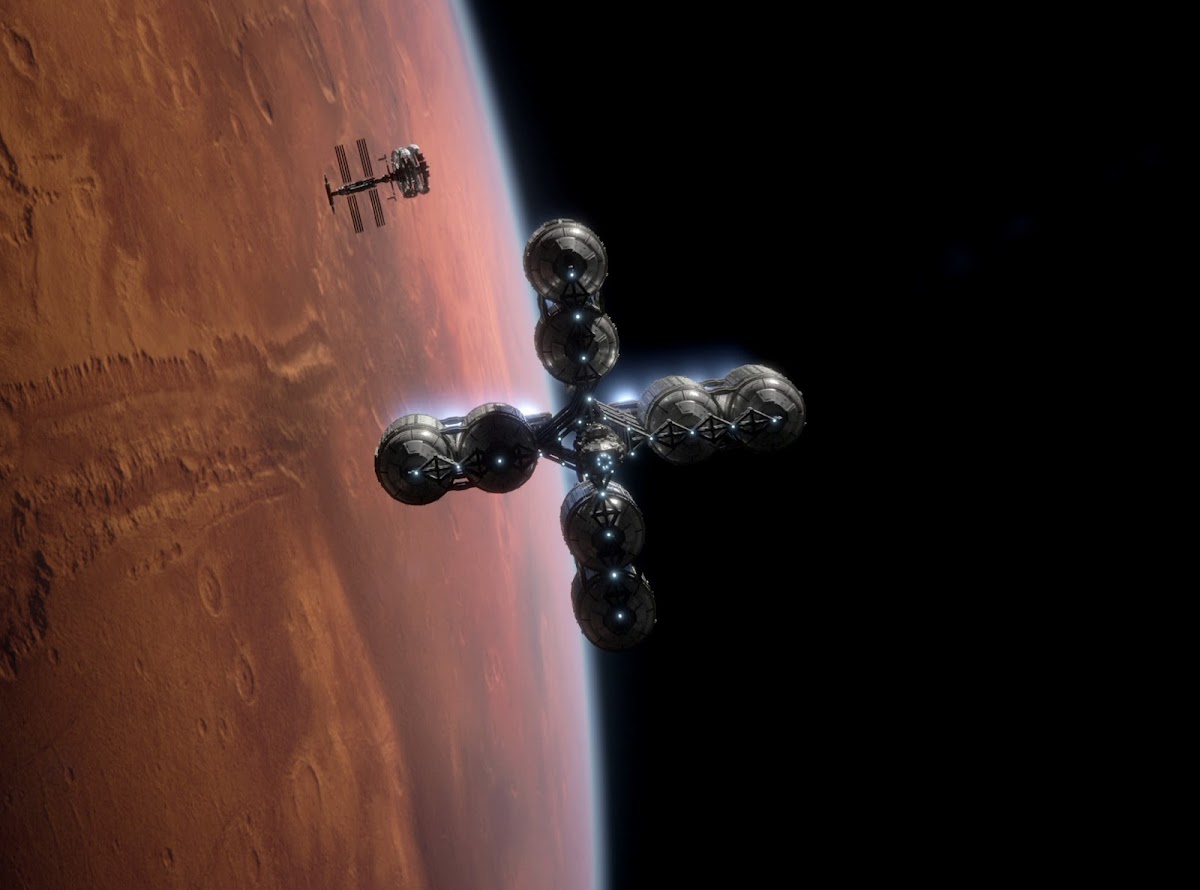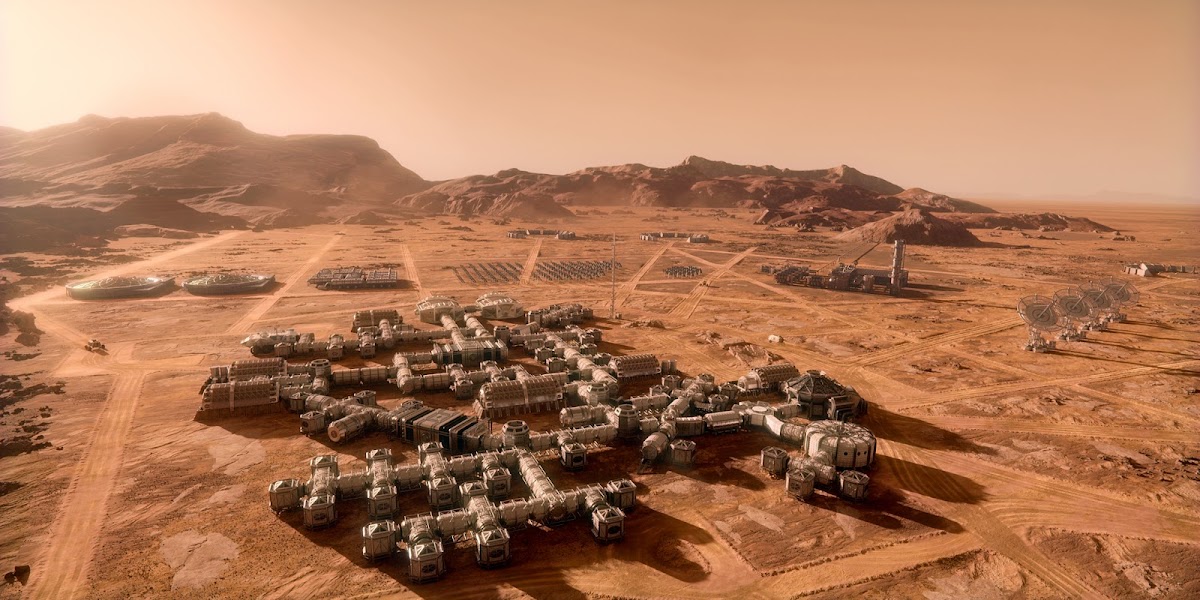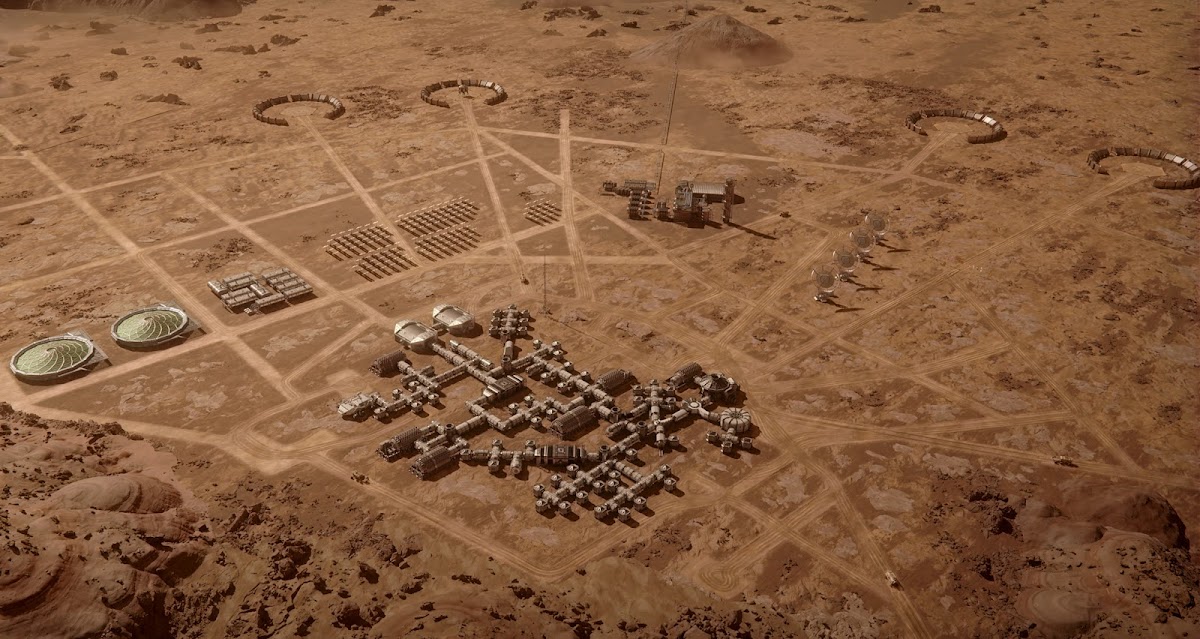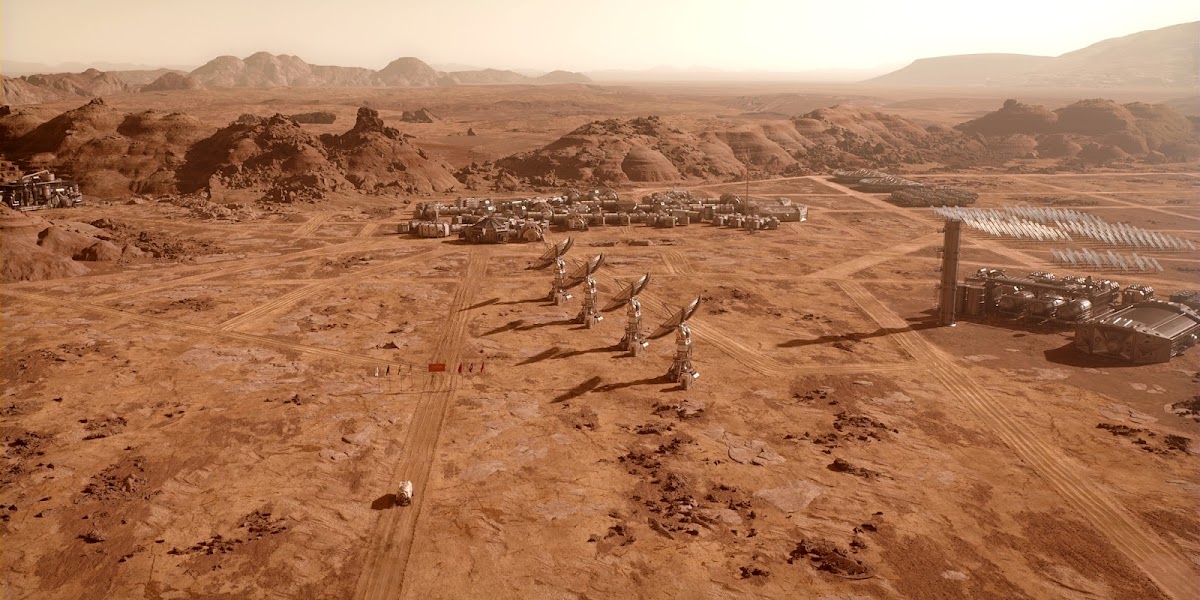Season 4 of
For All Mankind alternate history sci-fi TV series, depicting alternate 2003, "is really about the building of a new civilization on Mars" by the words of the co-creator of the series Ben Nedivi. The international
Happy Valley Base, founded in 1995 during season 3 and located in Melas Chasma in the Valles Marineris canyon system on Mars, has been significantly expanded and there are around 200 people living in the base during season 4. The base is financed and operated by
Mars-7 Alliance (consisting of US, USSR, ESA, North Korea, India, Japan, and the Coalition of Communist Countries for Spaceflight (CCCS)) and maintained by a private company
Helios Aerospace.
Ground level of the base features several separate facilities for power generation, communications, fuel refinement, regolith processing, algae production, storage etc. and a central interconnected cluster of modules consisting of the Entrance hall for new arrivals with airlocks for the rovers, control rooms, laboratories, hydroponic farms, meeting rooms, warehouses / garages, a cafeteria, as well as the quarters for higher level personnel and astronauts / cosmonauts. The base has
5 underground sublevels, of which level 4 & 5 are still under construction in 2003 and not accessible. The sublevels house maintenance and storage rooms and additional quarters for workers. There is also a separate North Korean sector accessible only to North Koreans. The base also operates six landing pads for their orbital Hopper shuttles.
The design of the Happy Valley Base in For All Mankind is the most plausible design of a mid-sized human base on Mars that we have ever seen in a TV series or film.
For All Mankind is exploring the idea of never ending space race if Soviets would have beaten US in the race for the Moon and the intention of the show is each season to jump about a decade further into the increasingly
diverging reality of the show: in season 1, depicting alternate 1969 to 1974, both Soviets and US start building their separate bases near the lunar South pole; in season 2 (1983) both bases have been expanded and the superpowers compete for resources on the Lunar surface; in season 3 (1992 to 1995), Soviets and US are joined by a private company
Helios and North Korea for a four way race to be first on Mars; in season 4 (2003) there is a sprawling international human base on Mars and an unexpected side enters the race to get hold on a large, lithium-rich asteroid for mining.
Here we collected high resolution shots from season 4 (downscaled from 4K UHD screens for better image quality) depicting the exterior and interior of Happy Valley Base on Mars. No images revealing major story plots are included. We will make a separate article with season 4 story spoilers after the last episode will be released on January 12.
[UPDATED:]
How to steal an asteroid .. "For All Mankind" season 4











 Pallas, located in the Main Asteroid Belt between the orbits of Mars and Jupiter, is the third-largest asteroid in the Solar System (~512km in diameter). It has 22% the mass of Ceres, the largest asteroid in the Solar System, and gravity of 0.021g (2,1% of the gravity force on Earth). With an orbital inclination of 34.8°, Pallas's orbit is unusually highly inclined to the plane of the Asteroid Belt, making Pallas harder to reach by spacecraft.
Pallas, located in the Main Asteroid Belt between the orbits of Mars and Jupiter, is the third-largest asteroid in the Solar System (~512km in diameter). It has 22% the mass of Ceres, the largest asteroid in the Solar System, and gravity of 0.021g (2,1% of the gravity force on Earth). With an orbital inclination of 34.8°, Pallas's orbit is unusually highly inclined to the plane of the Asteroid Belt, making Pallas harder to reach by spacecraft.








 Deimos is the smaller and outer of the two natural satellites of Mars, the other being Phobos. Deimos, likely an asteroid captured by Mars' gravity, is highly non-spherical with a mean diameter of 12.5 km (about 57% the size of Phobos) and it orbits 23,460 km from Mars (Deimos' orbit is slowly getting larger and it is expected to eventually escape Mars' gravity). Escape velocity from the surface of Deimos is only 5.6 m/s so a human can basically jump off of it.
Deimos is the smaller and outer of the two natural satellites of Mars, the other being Phobos. Deimos, likely an asteroid captured by Mars' gravity, is highly non-spherical with a mean diameter of 12.5 km (about 57% the size of Phobos) and it orbits 23,460 km from Mars (Deimos' orbit is slowly getting larger and it is expected to eventually escape Mars' gravity). Escape velocity from the surface of Deimos is only 5.6 m/s so a human can basically jump off of it.

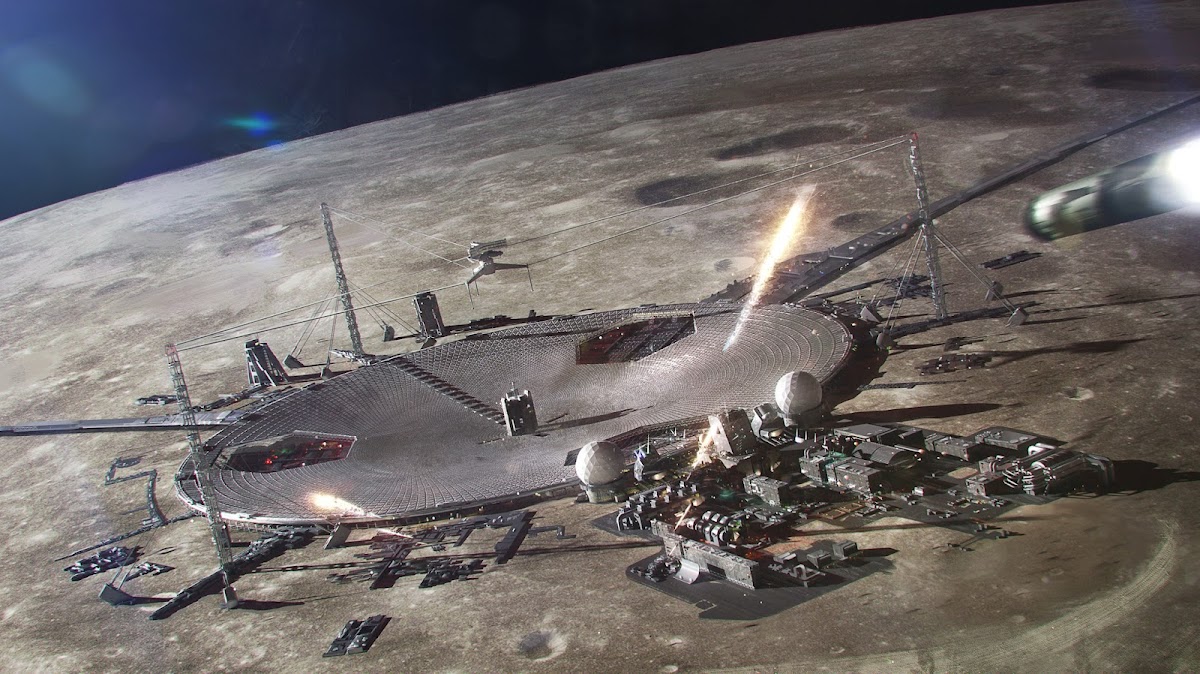
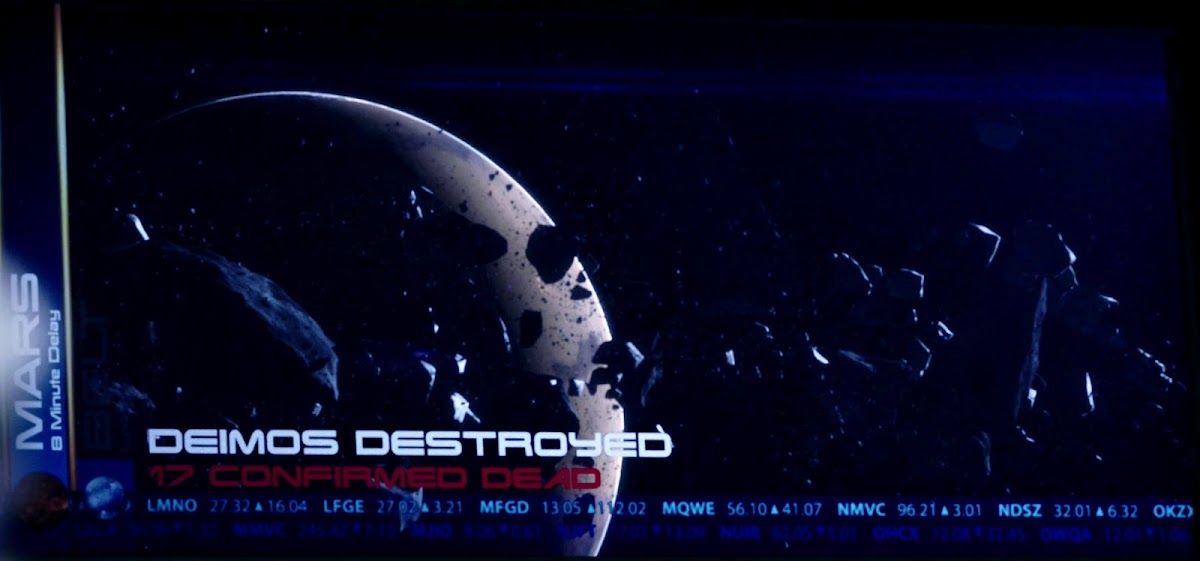


 On April 4th at Starbase, Texas SpaceX CEO and lead designer Elon Musk provided an unannounced update of SpaceX's
On April 4th at Starbase, Texas SpaceX CEO and lead designer Elon Musk provided an unannounced update of SpaceX's 



 Environment concept artist
Environment concept artist 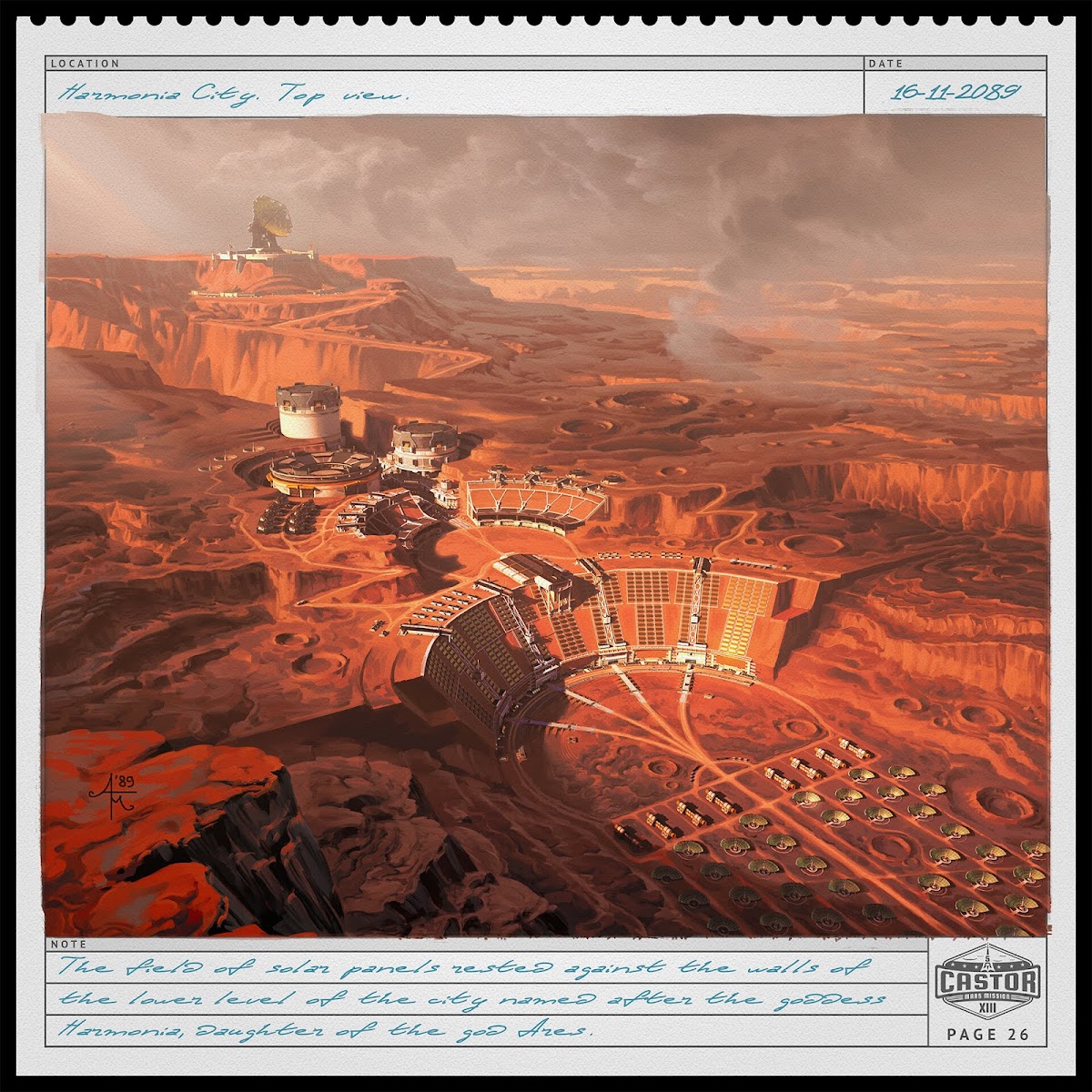



 Environment concept artist
Environment concept artist 





